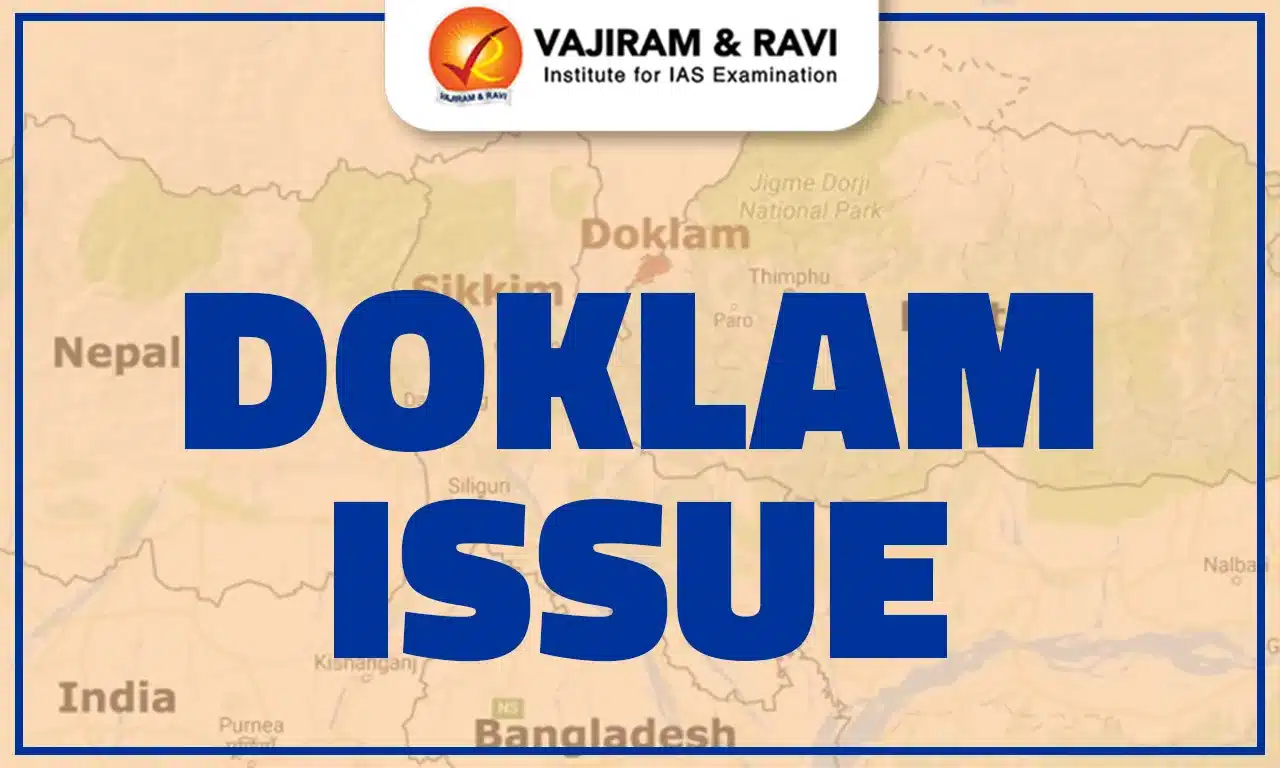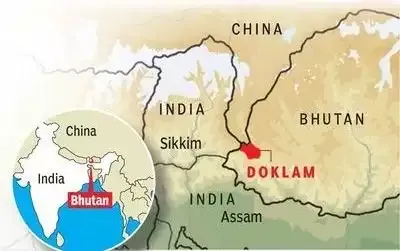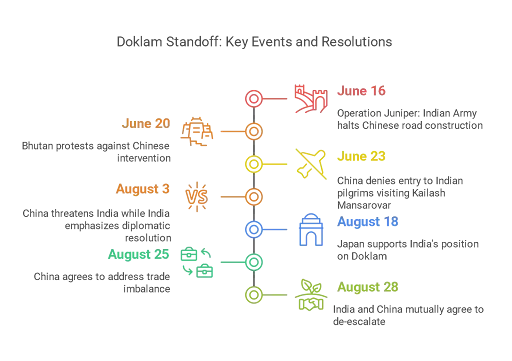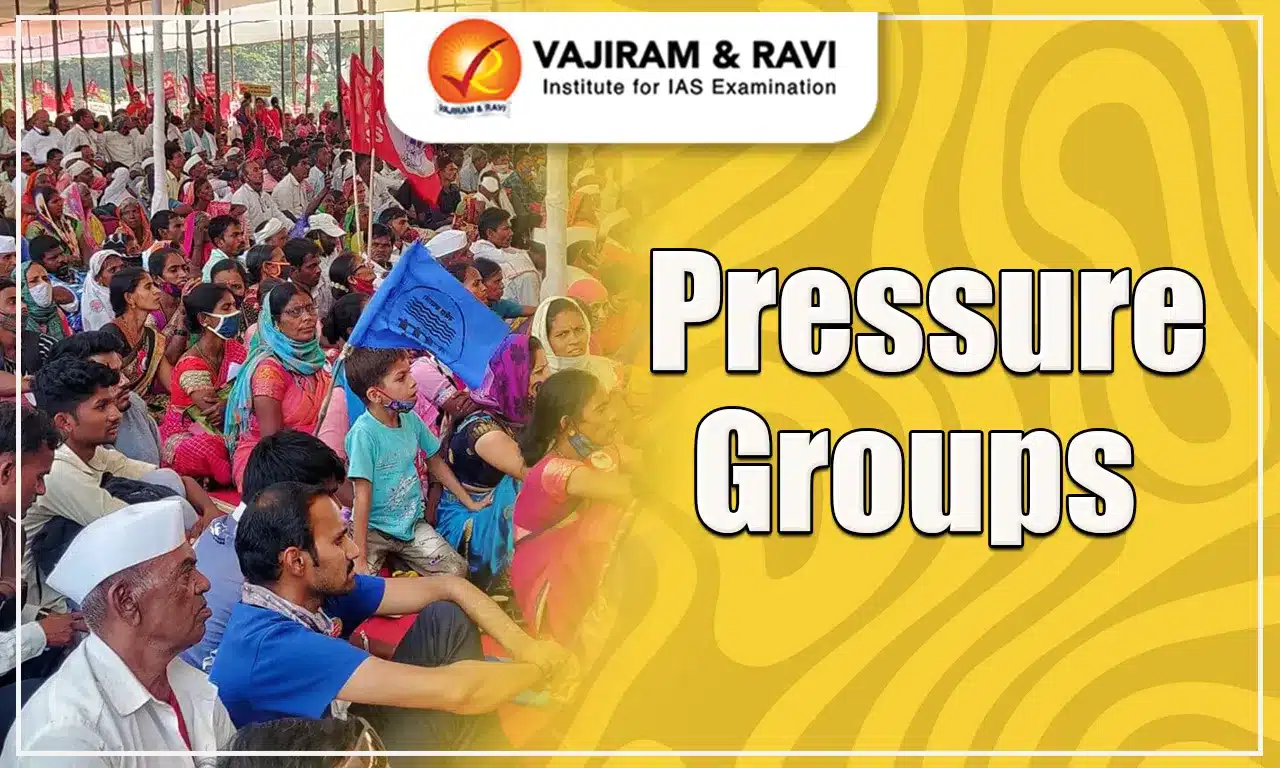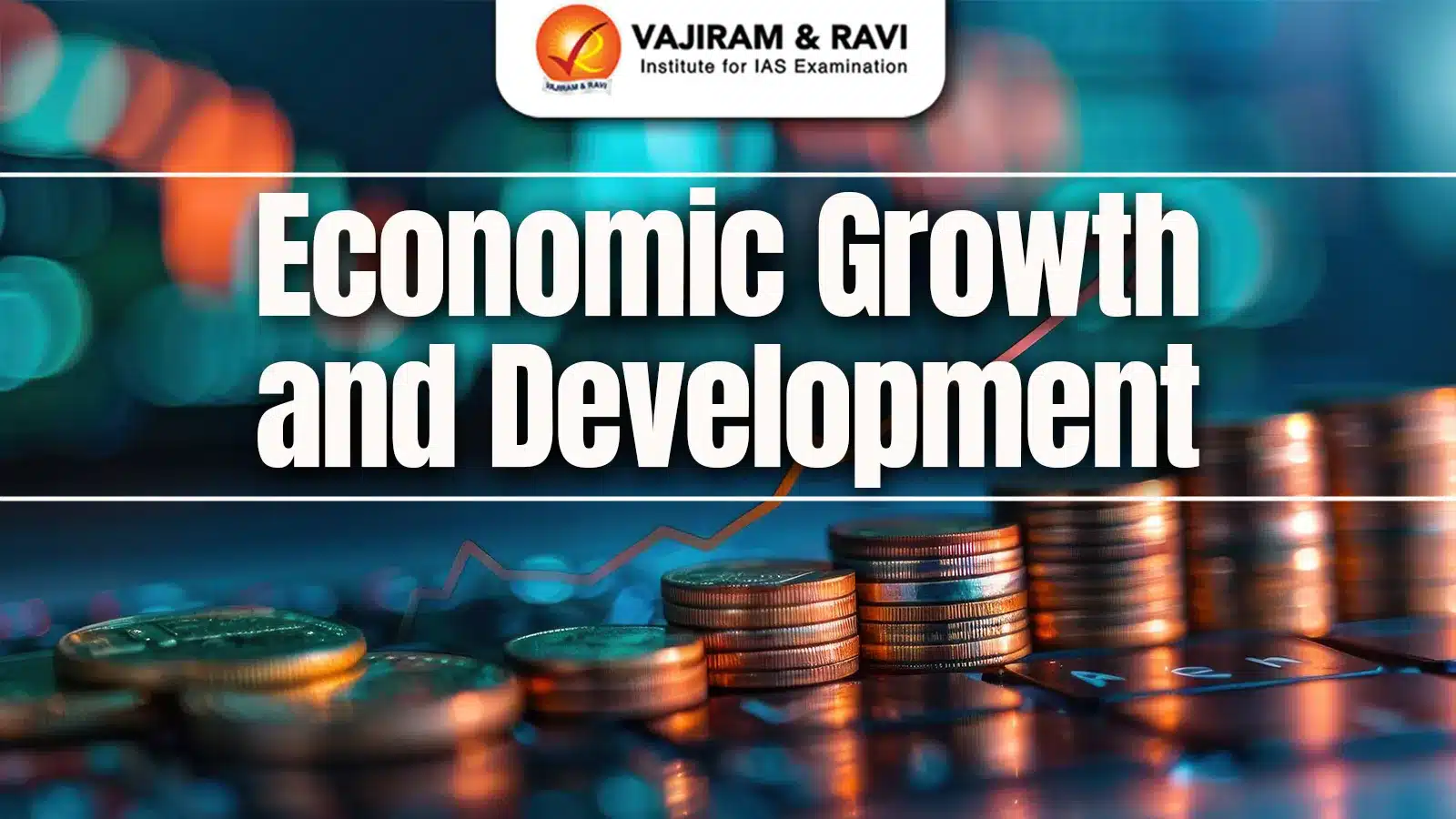Doklam Issue is a border dispute between India and China that began in 2017 due to China's illegal road construction in Doklam. The Doklam Issue led to a military standoff between India and China for 73 days. The Doklam standoff ended in August 2017 after India and China mutually decided to disengage.
Doklam issue resulted from China's aggressive policies in its neighbourhood, which affected the sovereignty of both India and Bhutan. But India's response was measured, balanced, and sober, which shows its rising role as the net security provider in the region.
Doklam Issue About
Doklam Issue is a military standoff that erupted in 2017 when the Chinese attempted to build a road in the area, and Indian troops, in support of their Bhutanese counterparts, objected, resulting in the standoff. It resulted in a 73-day standoff between the People’s Liberation Army (PLA) and the Indian Army, which ended in August 2017 after mutual disengagement.
Doklam Issue Background
Doklam Issue arose because of the Chinese policies of Salami Slicing and the Finger Strategy. They had planned to ignore Bhutan's objections in the disputed territory between China and Bhutan, as they had done in the past. Due to past success in constructing artificial islands and militarization of the South China Sea against big powers like the USA and Association of Southeast Asian Nations (ASEAN) members, it felt it would not face any insurmountable opposition from Bhutan.
Doklam Issue Map
Doklam is strategically located near the Siliguri Corridor (also known as Chicken's Neck), which connects mainland India to its northeastern region. Doklam, or Donglang in Chinese, is an area spread over less than 100 sq km comprising a plateau and a valley at the trijunction between India, Bhutan, and China. It is surrounded by the Chumbi Valley of Tibet, Bhutan’s Ha Valley, and Sikkim.
Doklam Issue Timeline
Doklam Issue between India and China began in June when the Indian Army halted Chinese road construction on the Doklam plateau. Bhutan protested against Chinese intervention and the threat to its sovereignty.
- In August, China warned India of serious consequences if troops were not withdrawn, but Japan supported India's position.
- Later, China agreed to address the trade imbalance with India and agreed to keep trade aside from the Doklam Issue.
- The Doklam standoff ended on August 28 with a mutual agreement.
Doklam Issue Impact on India
Doklam Issue led to a huge political, diplomatic, and moral victory for India. The Doklam Issue has significantly enhanced India's image as a responsible, decisive, and dependable actor on the global stage. But it also led to the straining of relations between India and China. The impact on India is discussed in detail below:
- Strain in India-China Relations: The Doklam issue led to a military conflict between India and China, which snowballed into a diplomatic issue with the possibility of Prime Minister Modi not attending the BRICS summit in Xiamen, China.
- Improved India-Bhutan Relations: India's consistent support for Bhutan's sovereignty, even in the face of conflict, strengthens the relationship between the two countries.
- Pakistan Factor: The handling of the Doklam issue by India also sent a clear signal to Pakistan about India’s strength.
- Pakistan hoped a military conflict between India and China would degenerate into a conflict, making them implacable foes and weakening India.
Doklam Issue Way Forward
Doklam Issue showed India’s resilience and its willingness to stand up for its allies despite difficulties. India’s response was calibrated and adhered to International norms. India ensured to resist Chinese aggression but still maintained a stance that resolution could happen only through peaceful dialogue. In this context, India shall follow the following steps:
- Dialogue and Diplomacy: India and China need to maintain open communication channels to prevent misunderstandings and escalating tensions.
- Throughout the Doklam issue, India maintained that a resolution could be sought through dialogue and diplomacy.
- Border Management: To address future border disputes, India must speed up the development of border infrastructure.
- Projects like Project Arunank and the Vibrant Village Program can help with this endeavour.
- Improving Defense Capabilities: India needs to increase its defence spending to develop a sufficient deterrent against any Chinese incursion.
- The introduction of Rafale Fighter jets and the signing of an agreement with the United States for F-35 fighter jets are positive steps forward.
- Connectivity to North-East: India has worked to improve connectivity between central and north-east India through projects such as the Kaladan Multimodal Project, Bharatmala, and the UDAN (Ude Desh Ka Aam Naagrik) Scheme, which reduces pressure on the Siliguri Corridor or Chicken Neck Corridor.
India has demonstrated stamina, resilience, and the ability to defend its principles in the face of adversity for its own and its partners' interests. This raises its stature in the neighbourhood and ASEAN region as a net security provider and demonstrates to its neighbours and friendly nations that they can rely on it in times of need.
Doklam Issue UPSC PYQs
Q.1 China is using its economic relations and positive trade surplus as tools to develop potential military power status in Asia’, In the light of this statement, discuss its impact on India as her neighbour. (UPSC Mains 2017)
Q.2 With respect to the South China Sea, maritime territorial disputes and rising tension affirm the need for safeguarding maritime security to ensure freedom of navigation and over flight throughout the region. In this context, discuss the bilateral issues between India and China. (UPSC Mains 2014)
Q.3 China and Pakistan have entered into an agreement for development of an economic corridor. What threat does it pose for India’s security? Critically examine. (UPSC Mains 2014)
Q.4 Siachen Glacier is situated to the (UPSC Prelims 2020)
(a) East of Aksai Chin
(b) East of Leh
(c) North of Gilgit
(d) North of Nubra Valley
Ans. (d)
Last updated on December, 2025
→ Check out the latest UPSC Syllabus 2026 here.
→ Join Vajiram & Ravi’s Interview Guidance Programme for expert help to crack your final UPSC stage.
→ UPSC Mains Result 2025 is now out.
→ UPSC Notification 2026 is scheduled to be released on January 14, 2026.
→ UPSC Calendar 2026 is released on 15th May, 2025.
→ UPSC Prelims 2026 will be conducted on 24th May, 2026 & UPSC Mains 2026 will be conducted on 21st August 2026.
→ The UPSC Selection Process is of 3 stages-Prelims, Mains and Interview.
→ UPSC Result 2024 is released with latest UPSC Marksheet 2024. Check Now!
→ UPSC Toppers List 2024 is released now. Shakti Dubey is UPSC AIR 1 2024 Topper.
→ Also check Best IAS Coaching in Delhi
Doklam Issue FAQs
Q1. What is the issue of Doklam?+
Q2. What is chicken neck in India?+
Q3. What is the significance of Doklam?+
Q4. What is the border issue between India and China?+
Q5. What is India-China border called?+
Tags: doklam issue quest UPSC International Relations and Institutions Notes



